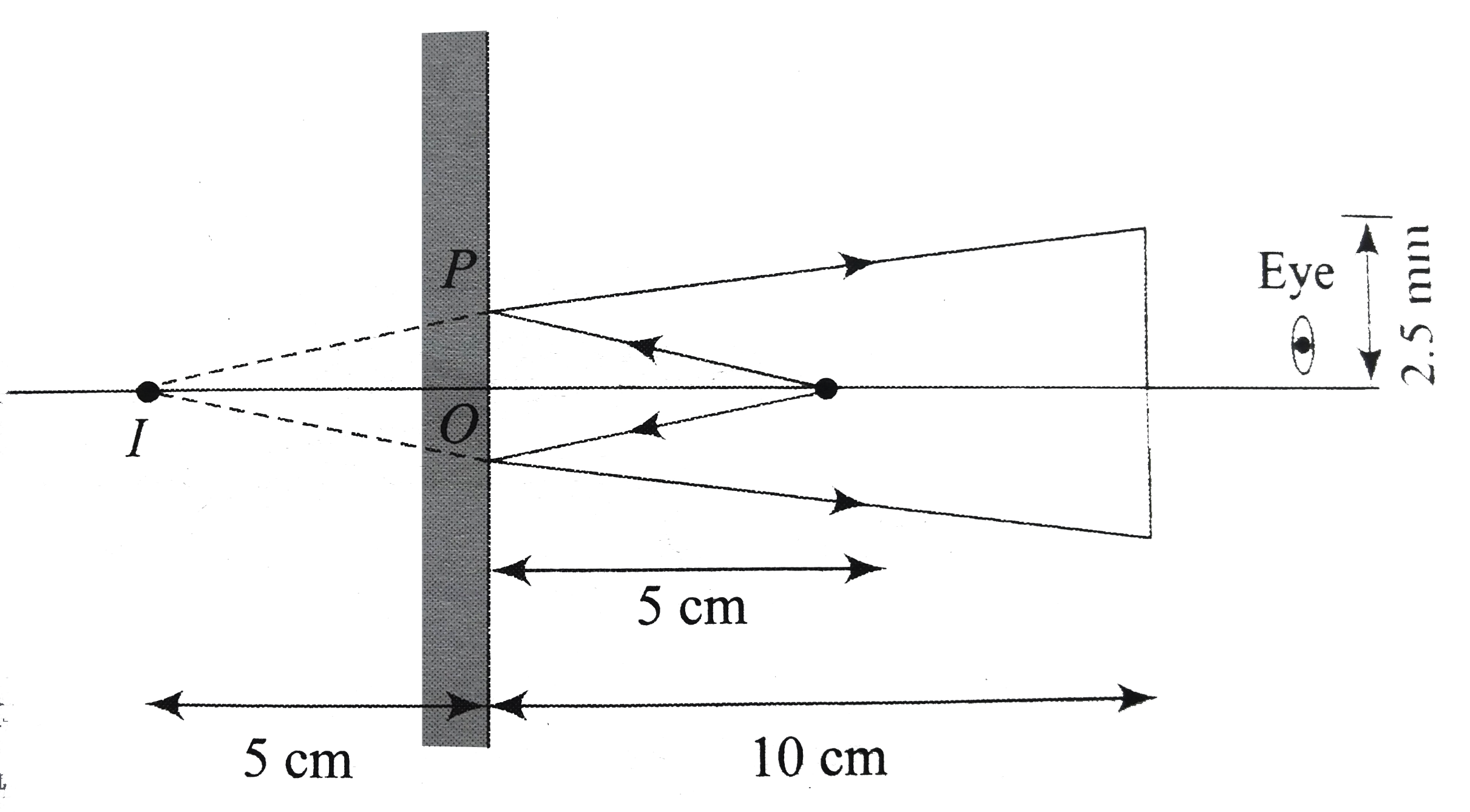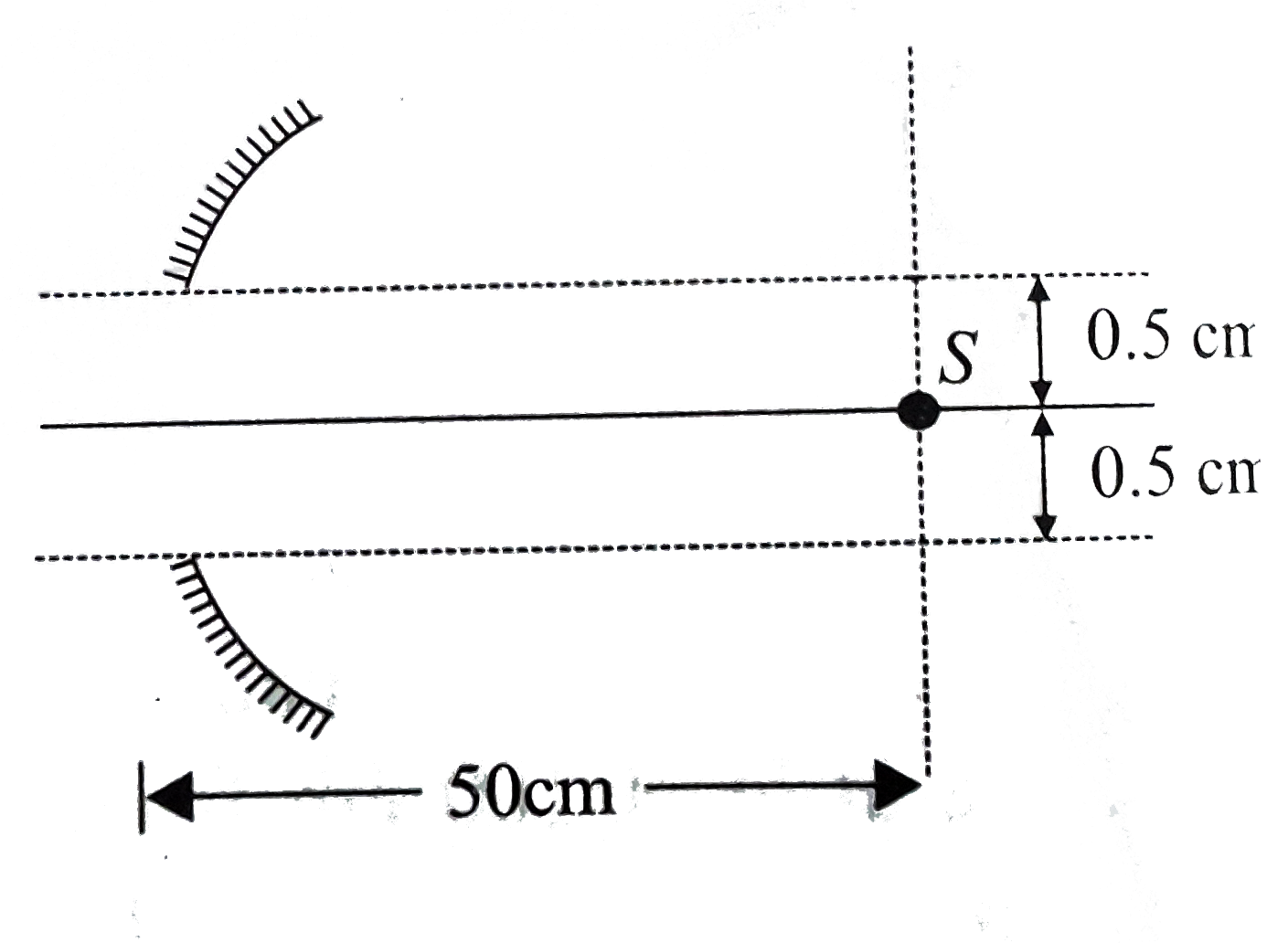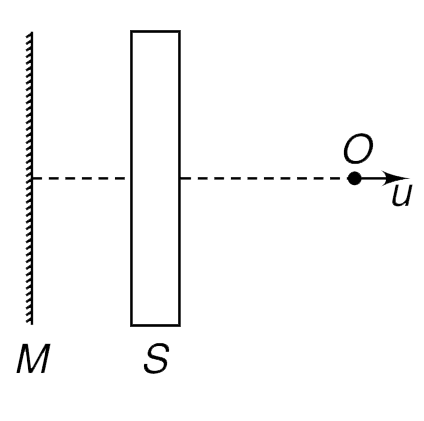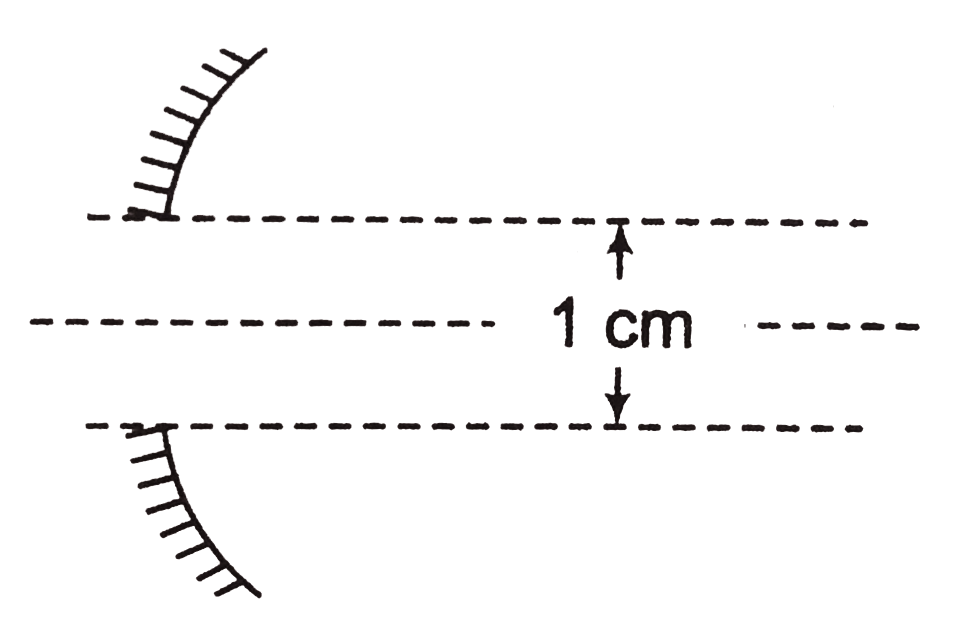A real point source is 5cm away from a plane mirror whose reflectinig ability is 50% , while the eye of an observer (pupil diameter 5mm) is 10cm away form the mirror. Asuume that both source and eye are on the same line perpendicular to the surface and refracted rays have no effect on intensity. Then,
the area of the mirro used in observing the image of source is (25π/36)mm2
the area of the mirror used in observing the image of source is 25πmm2
the ratio of the intensities of light as received by the observer in the presence to that in the absence of mirror is (10/9)
the ratio of the intensities of light as received in the presence to that in the absence of mirror is 19/18
The correct Answer is:a.,d.
Here, OP5cm=2.5mm15cm
OP=56mm
Area of mirror used in reflection is
π×OP2=25π36mm2
Let the power of source be P.
Intensity in absence of mirror is
I1=P4π×(5)2
Intensity in presence of mirror is
I2=P4π×(5)2+P/24π×(5)2
I2I1=1918

Topper's Solved these Questions
- GEOMETRICAL OPTICSBOOK - CENGAGE PHYSICSCHAPTER - GEOMETRICAL OPTICSEXERCISE - Assertion-Reasoninig
2 Videos
- GEOMETRICAL OPTICSBOOK - CENGAGE PHYSICSCHAPTER - GEOMETRICAL OPTICSEXERCISE - Linked Comprehension
51 Videos
- GEOMETRICAL OPTICSBOOK - CENGAGE PHYSICSCHAPTER - GEOMETRICAL OPTICSEXERCISE - Subjective
26 Videos
- FRICTIONBOOK - CENGAGE PHYSICSCHAPTER - FRICTIONEXERCISE - QUESTION BANK
1 Videos
- GRAVITATIONBOOK - CENGAGE PHYSICSCHAPTER - GRAVITATIONEXERCISE - Question Bank
39 Videos
Similar Questions
If the object is 5 cm away from the plane mirror , the image formed by it and the object will be ------- cm apart .
View SolutionA concave mirror forms an image of 20 cm high object on a screen placed 5.0 m away from the mirror. The height of the image is 50 cm. Find the focal length of the mirror and the distance between the mirror and the object.
View Solution
Knowledge Check
If the object is 5 cm away from the plane mirror, the image formed by it and the object will be ............ cm apart.
A2.5B5C10D15a sound source emits frequency of 180hZ when moving towards a rigid wall with speed 5m/s and an observer is moving away from with speed 5m/s. Both source and observer moves on a straight line which is perpendicular to the wall. The number of beatd per second heard by the observer will be [speed of sound = 335m/s]
A5beats/sB10beats/sC6beats/sD8beats/sA concave mirror forms real image of a point source lying on the optical axis at a distance of 50cm from the mirror. The focal length of the mirror is 25cm. The mirror is cut in two, and its halves are drawn at a distance of 1 cm apart in a direction perpendicular to the optical axis.

Q. The distance between the two images formed by the two halves of the mirror isA0.5cmB1cmC1.5cmD2cm
A sound source ( S ) emits frequency of 180Hz when moving towards a tigid wall with speed 5 m / s and an observer (O) is moving away from wall with speed 5 m / s. Both source and observer move on (z) straight line which is perpendicular to the wall as shown in figure. Find the number of beats, per second heard by the observer. (Speed of sound 355 m / s).
'(##CEN_KSR_PHY_JEE_C17_E01_030_Q08##)'
View SolutionA monochromatic point source(S1) is at a distance d from a screen. Another identical source (S2) is at a large distance from the screen. The two sources are on a line which is perpendicular to the screen. Sources are coherent. What is the shape of interference fringes on the screen?
(b) Three identical coherent sources are placed on a straight line with two neighbouring ones separated by a distance d = 0.06 mm. The sources produce monochromatic light of wavelength λ = 550.4 nm. A line AB is located at a distance D = 2.50 m from the sources and is perpendicular to line joining the three sources. Intensity of light at P with any one of the sources switched on is Io. Find the intensity when all three sources are switched on. Distance of point P from O isy = 1.72 cm (see figure)

View SolutionA point source is at a distance 35cm on the optical axos from a spherical mirror having a focal length 25cm. At what distance measured along the optical axis form the concave mirror should a plane mirror (perpendicualr to principle axis) be placed for the image it forms (due to rays falling on it after reflection from the concave mirror) to coincide with the point source?
View SolutionObject O is placed in front of a plane mirror M. A glass slab S having thickness t = 3 cm and refractive index μ=1.8 is placed between the object and the mirror. The refracting faces of the slab are parallel to the mirror surface. The object is made to move with a velocity of u=2m/s perpendicular to the mirror surface. Find the speed of the image formed after
(a) refraction from the slab followed by reflection from the mirror.
(b) refraction from the slab followed by reflection from the mirror followed by the refraction from the slab.

View SolutionConcave mirror forms the real image of a point source lying on the optical axis at a distance of 50 cm from the mirror. The focal length of the mirror is 25 cm. The mirror is cut into and its halves are drawn a distance of 1 cm apart in a direction perpendicular to the optical axis. How will the image formed by the halves of the mirror be arranged?

View Solution
